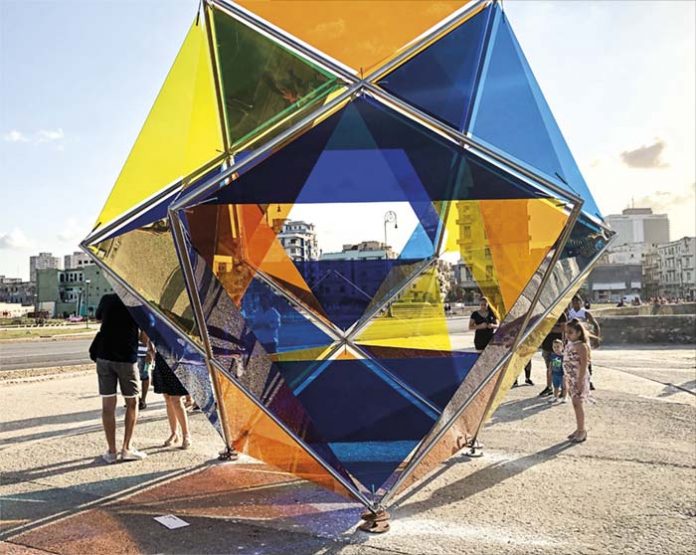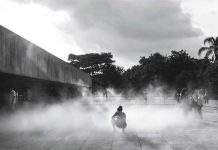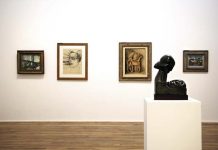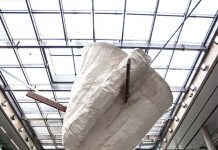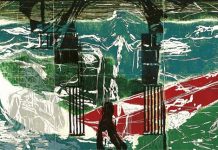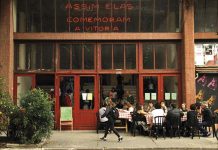“FISH DOES NOT SURVIVE IN CLEAN WATERS”. Mao Tse Tung’s maxim resembles the turbulent sailing of the Havana Biennial over 30 years, with financial and bureaucratic difficulties but not enough to wreck it. The theme of the 13th edition, The Challenge of the Possible synthesizes the struggle that touches the imaginary and tries to face the impossible. The event continues in the search of greater correspondences between the creation and the practices of life, or to converging points. With a year of delay due to Hurricane Irma, the show coincides with the celebrations of the 500th anniversary of the founding of Havana and the almost 30th Biennial. What is the transcendence of the island’s greatest cultural event? There have been many overlapping mediations at the Havana Biennial since its founding in 1984: local architecture, historical burden, local financial crisis and that of the participating countries, mixed ideological frictions, criticism inside and outside Cuba, the fate of voracious gallerists and collectors who come to the Island looking for quality art at prices well below the international market. If compared to the previous editions the 13th Biennial is not among the best.
The same happens to the last biennials of São Paulo, Venice and Documenta of Kassel. In Havana, the curatorship is signed by seven Cuban curators led by critic and intellectual Nelson Herrera Ysla, in addition to the 21 invited foreigners.
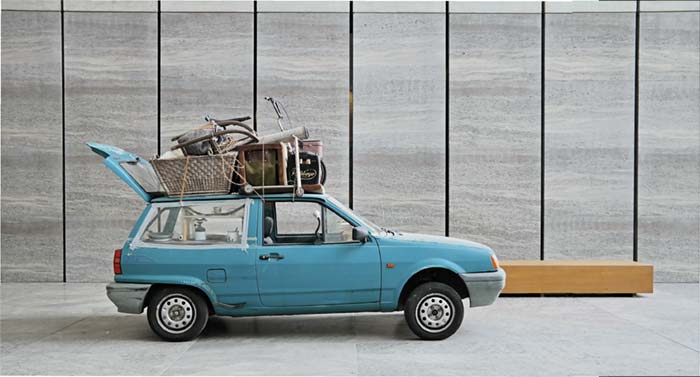
The moment is for reflection, transition, discomfort and change, with some curators taking up positions in other cultural institutions or simply setting out on a solo career. Biennials make history by unraveling previous accomplishments and meanings. But what singularities can still provoke surprises amid the excessive accumulation of biennials, fairs, festivals, residences? The works distributed throughout Havana, in addition to Matanzas, Sancti Spiritus, Cienfuegos and Camagüey are flattened by the international moment.
At the Bienal’s headquarters, Alexia Miranda’s Collective Fabric performance polarizes the attention and occupies the lobby of the Wifredo Lam Center. With the idea of responding to the present, with possible notions of future, alert to the urgency of social transformations. Collectively tran- scribed circles, in various patterns and rhythms, are tools in an attempt to restore moments of peace in violent El Salvador. The gentrification of the great metropolis arrived in Dresden, a German city where Manaf Halbouni, a Syrian artist, lives 34 years. As his dream of living in a house never materialized, he turns the car into a residence-studio, “where I solve everything”, exhibited at the Havana Biennial as art.
The country is also on the agenda of Lais Myrrha with Cronografia dos Desmanches, a work in progress that has been developing since 2012. “The work comes when I see the boom in real estate speculation as I walk through the streets and find five houses destroyed once “. They are images of demolitions, abandoned sites, busts, ports, some unidentified. “
The Biennial of Havana bets on the young artists. In this context is Ruy Cézar Campos, from Ceará who works different temporalities in three videos: Circunvizinhas, The Arrival of Monet and Tangled Terminals. All members of the series Rede Vem do Mar, one year research between Brazil, Angola and Colombia. “I try to establish a phenomenological link between the infra-structure of submarine cables and the platforms for landing them. Fortaleza is the most important city in the South Atlantic network with which it is connected, Sangano, in Angola and Barranquila, in Colombia”. Operating between technology and aesthetics, the artist expresses himself between performance, documentary and fiction, with social political bias.
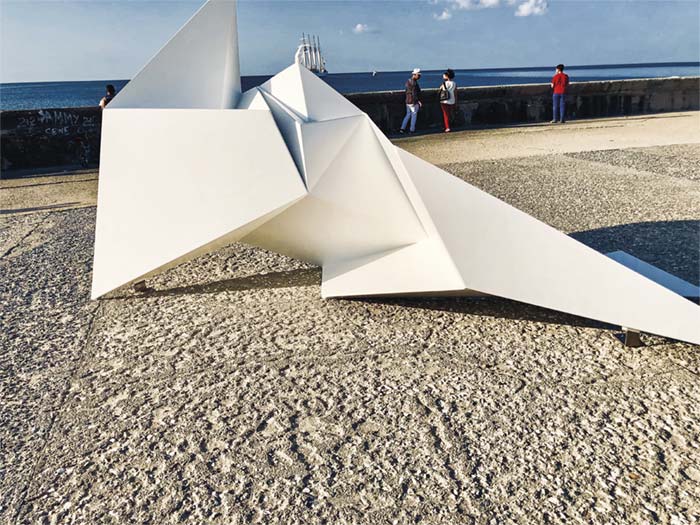
In Matanzas, the new territory of the Biennial, Marilá Dardot asserts the utopia of the dilution of art in daily life. “My job is a segment of the residency that I did in Mexico in 2015, at the time of the episode of the missing students. He picked newspaper headlines and daily intervened with writings executed with water on a concrete wall. As he wrote them, they went out. “ In Matanzas, he opted for the performance Volver, in which he repeatedly writes with water the phrase “La esperanza” I return to a wall in the street. Marilá’s work has changed in recent years, “from an optimistic vision linked to literature, poetry, fiction and nature, to a more pessimistic view of Brazilian political facts. “There was a political awakening in my generation, as well as in myself.” Finally, three Cuban artists with established careers and identifiable poetics, gathered in the Interior Museums show, at the National Museum of Fine Arts. Kcho (Alexys Leyva Machado), Carlos Garaicoa and Los Carpinteros. Kcho’s international flight begins with Regata, a 1993 installment, made at age 23, a year before joining the collection of the Reina Sofia Museum in Madrid, MoMa and the cast of the Barbara Gladstone gallery in New York. Barco, symbol of the collective imagination of Cubans, appears in gestures, sculptures or installations with objects that are nourished by various poetics. As the geographer Milton Santos said, street art, naturally urban and public, carries a heavy political burden for occupying spaces outside the institutionalized fields of art and for touching the social realities closely. Score, installation of Carlos Garaicoa, developed for ten years, synthesizes this thought. The work has the participation of 70 musicians of street, of Madrid and Bilbao. It is an orchestra with 35 videos of street musicians performing different pieces. The final score, by Cuban musician Esteban Puela, fuses the varied sonorities and is transmitted to the large digital screen that assumes the direction of the orchestra. Los Carpinteros, in one of his last acts as a duo, places in the Alacenas, in 2016, criticism about the devastation of the storms that invade the Caribbean. The sounds emitted by the hurricanes are recorded, reproduced and placed in old kitchen cabinets that emit the terrifying noise of the phenomenon.
These artists form a logical and consensual core, but it is worth remembering that there are at least two dozen others, equally professionally respected, gravitating towards international shows.

